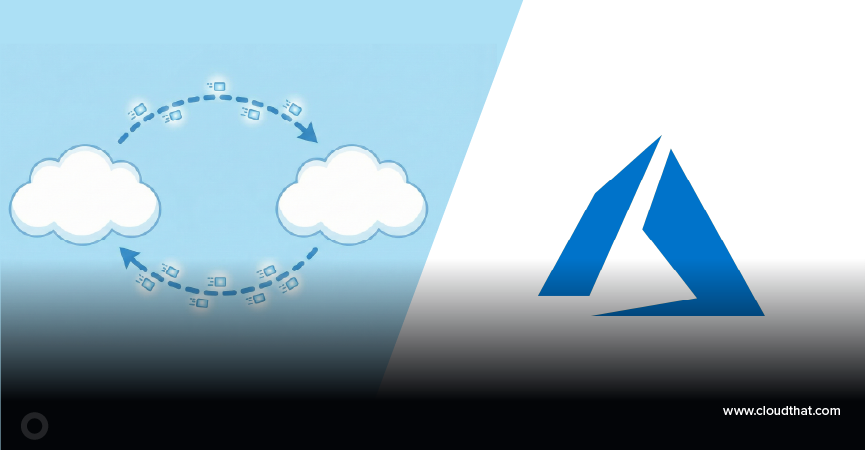|
Voiced by Amazon Polly |
Introduction
Data resilience is a paramount concern for businesses relying on cloud-based infrastructure in the ever-evolving landscape of cloud computing. Amazon Web Services (AWS) provides a robust solution to address this concern with its managed relational database service (RDS). Amazon RDS allows users to easily set up, operate, and scale a relational database in the cloud. To enhance data resilience and disaster recovery capabilities, AWS offers a feature known as cross-region backup through AWS Backup. In this blog post, we’ll explore how to create cross-region backups for Amazon RDS using AWS Backup and why this practice is crucial for safeguarding your data.
Pioneers in Cloud Consulting & Migration Services
- Reduced infrastructural costs
- Accelerated application deployment
Understanding Amazon RDS Cross-Region Backup
AWS Backup is a fully managed backup service that simplifies the creation, retention, and restoration of backups across various AWS services, including Amazon RDS. Cross-region backup refers to replicating database backups from one AWS region to another, protecting against region-specific failures, disasters, or disruptions.

Steps to Creating Amazon RDS Cross-Region Backups with AWS Backup
Step 1: Access the AWS Backup Console
- Log in to the AWS Management Console.
- Navigate to the AWS Backup service by selecting “Services” and then “Backup”.

Step 2: Create a Backup Vault
- Click the “Create vault” button in the AWS Backup console.
- Provide a name for your backup vault, and optionally, add a description. Click “Create.”

Step 3: Define an AWS Backup Plan
- Go to the “Backup plans” section in the AWS Backup console.
- Click on “Create backup plan.”
- Enter a name for your backup plan and configure the backup frequency, window, and lifecycle settings.
- Under “Backup vault,” choose the vault you created in Step 2.
- In the “Advanced settings” section, enable “Cross-Region Copy.” This is crucial for creating cross-region backups.
- Define the destination region where you want to copy the backups.
- Click “Create plan” to save the backup plan.




Step 4: Associate Amazon RDS Instances with the Backup Plan
- In the AWS Backup console, navigate to “Protected resources.”
- Click “Add resource” to associate an Amazon RDS instance with the backup plan.
- Choose “Amazon RDS” as the resource type.
- Select the Amazon RDS instance(s) you want to include in the backup plan.
- Click “Add resource” to confirm the association.


Step 5: Verify Cross-Region Copy
- Return to the “Backup plans” section in the AWS Backup console.
- Click on the backup plan you created.
- In the “Backup rules” tab, verify that “Cross-Region Copy” is enabled and the destination region is correctly configured.

Step 6: Monitor Backups
- To monitor the progress of cross-region backups, go to the “Jobs” section in the AWS Backup console.
- Review the status of backup copy jobs to ensure they are completed successfully.
Why Cross-Region Backups Matter
Geographical Redundancy:
Cross-region backups provide geographical redundancy, reducing the risk of data loss in a regional outage. Storing backups in a different AWS region ensures your data remains accessible even if an entire region becomes temporarily unavailable.
Disaster Recovery:
In a disaster affecting the primary region, having backups in a different region allows for quick recovery and minimal downtime. This is critical for business continuity and maintaining service levels for your applications and users.
Compliance and Security:
Some regulatory requirements mandate data replication and backup storage in multiple geographic locations. Cross-region backups help organizations meet these compliance standards, enhancing the overall security posture.
Risk Mitigation:
Cross-region backups serve as a proactive risk mitigation strategy. They protect against data corruption, accidental deletions, or other unforeseen issues that might impact your primary AWS region.
Global Operations:
For organizations with a global footprint, cross-region backups align with the distributed nature of their operations. It ensures that data is available to different parts of the world, contributing to a seamless and resilient global infrastructure.
Conclusion
In an era where data is a cornerstone of business operations, investing in comprehensive backup strategies is not just a best practice – it’s a necessity. With Amazon RDS cross-region backups, businesses can confidently navigate the dynamic landscape of cloud computing, ensuring the availability and integrity of their critical data assets.
Drop a query if you have any questions regarding Amazon RDS cross-region backups and we will get back to you quickly.
Want to save money on IT costs?
- Migrate to cloud without hassles
- Save up to 60%
About CloudThat
CloudThat is an award-winning company and the first in India to offer cloud training and consulting services worldwide. As a Microsoft Solutions Partner, AWS Advanced Tier Training Partner, and Google Cloud Platform Partner, CloudThat has empowered over 850,000 professionals through 600+ cloud certifications winning global recognition for its training excellence including 20 MCT Trainers in Microsoft’s Global Top 100 and an impressive 12 awards in the last 8 years. CloudThat specializes in Cloud Migration, Data Platforms, DevOps, IoT, and cutting-edge technologies like Gen AI & AI/ML. It has delivered over 500 consulting projects for 250+ organizations in 30+ countries as it continues to empower professionals and enterprises to thrive in the digital-first world.
FAQs
1. Can I associate multiple Amazon RDS instances with a single backup plan?
ANS: – Yes, you can associate multiple Amazon RDS instances with a single backup plan. In the AWS Backup console, go to “Protected resources,” click on “Add resource,” select “Amazon RDS,” and choose the Amazon RDS instances you want to include in the backup plan.
2. How do I monitor the progress of cross-region backups?
ANS: – Go to the “Jobs” section in the AWS Backup console to monitor cross-region backups. Review the status of backup copy jobs to ensure they are completed successfully. Monitoring is essential to confirm that your backup strategy is working as intended.
3. How often should I test the restore process for cross-region backups?
ANS: – It is recommended to periodically test the restore process by recovering a backup from the cross-region copy. This practice ensures that your backup strategy is effective, and you can quickly restore data when needed, contributing to a reliable disaster recovery plan.

WRITTEN BY H S Yashas Gowda
Yashas Gowda works as a Research Associate at CloudThat. He has good hands-on experience working on Azure and AWS services. He is interested to learn new technologies and tries to implement them.


 Login
Login


 March 20, 2024
March 20, 2024 PREV
PREV











Comments